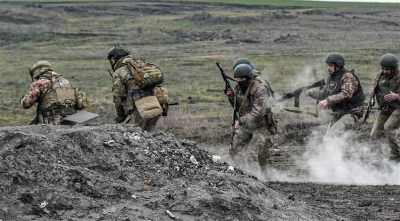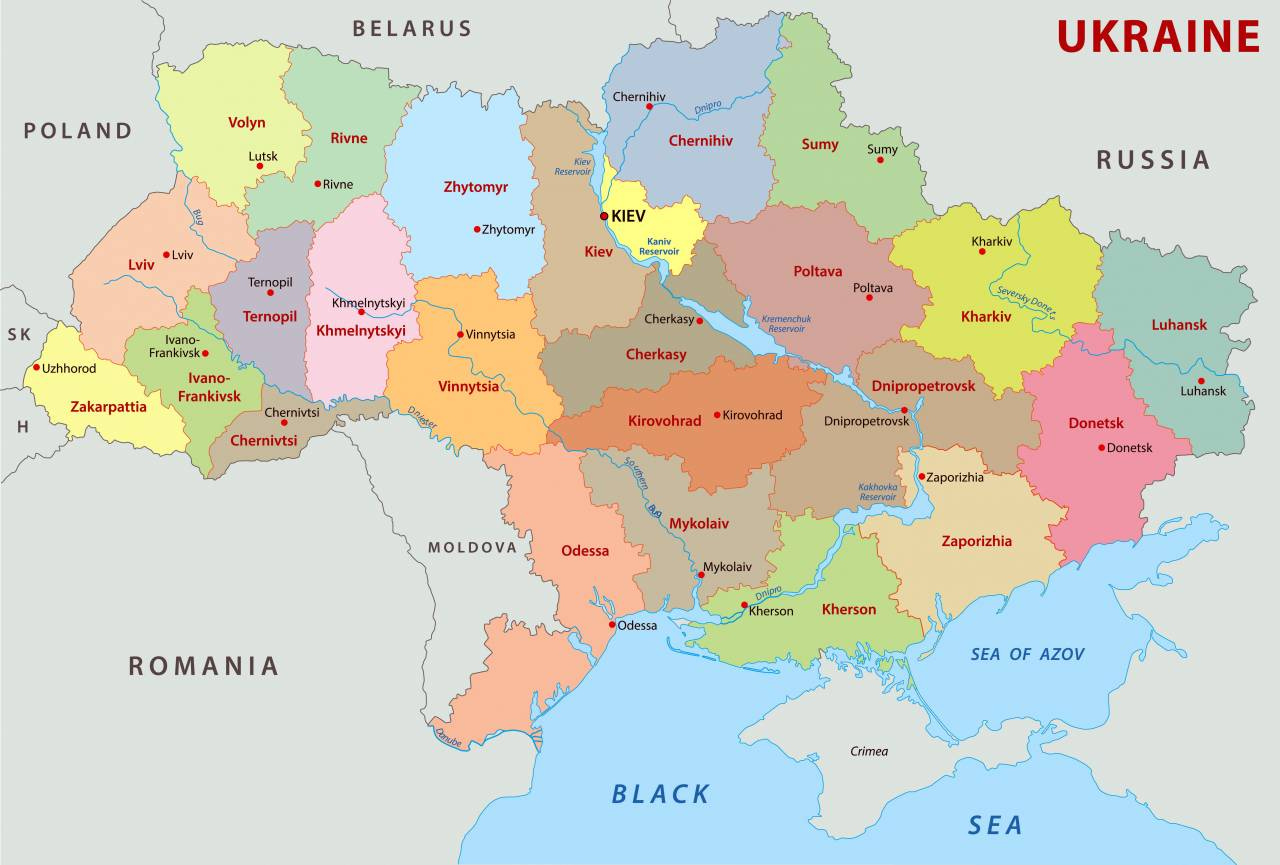Possible Motives for the Daily Russian Missile Attacks in Ukraine

All Global Research articles can be read in 51 languages by activating the Translate Website button below the author’s name.
To receive Global Research’s Daily Newsletter (selected articles), click here.
Click the share button above to email/forward this article to your friends and colleagues. Follow us on Instagram and Twitter and subscribe to our Telegram Channel. Feel free to repost and share widely Global Research articles.
***
Ever since the Russians started targeting Ukrainian sites with standoff missiles on October 10, 2022, I have been chronicling the strikes and sending the daily strike reports in translation, including the struck cities or oblasts, to my email group. I can confirm that the strikes have occurred daily, with no dates omitted, and have all been multiple. Part of my reason for doing this was to prove that the rash of media statements, starting in March of 2022, that Russia was “running out of missiles” was disinformation.
Indeed, that makes almost 7 months of daily multiple strikes. Russia has never run out of missiles, not even close.
Strategic Targets
To make some sense out of the locations of Russian missile strikes on strategic targets, we can imagine several kinds of motives on the part of Russian forces.
First, a map of the Ukraine oblasts is shown below (the Ukrainian names are shown, which are very similar to the Russian names).

I will be referring to this article each time I post a report on Russian missiles strikes on this platform.
1—Russian commentators suggest that at some point, Russia will be attacking Kiev. As you examine the geographic pattern of the struck oblasts (large political divisions analogous to a US state or Canadian province, for example), you will see that many are located along hypothetical routes that could be taken in launching this offensive from Lugansk or Donetsk. The missile strikes targeting strategically important targets would of course weaken the Ukrainian forces and supply routes in these oblasts, making it safer for the Russian attackers to pass.
Assuming the Russian forces start at the Lugansk or Donetsk oblast, there are essentially two possible routes for a hypothetical offensive on Kiev, along the sequence of oblasts appearing below (BTW, the names of oblasts also generally coincide with the names of the capital cities of said oblasts, in analogy to New York City as the capital of New York State. Please remember this to avoid confusion).
A northern route along the following sequence of oblasts:
→ Kharkov → Sumy or Poltava → Chernigov → Kiev (here Kiev refers to the Kiev oblast, where the capital city of Kiev is located), and
A southern route along the following sequence of oblasts and along the right bank of the Dniepr:
→ Dniepropetrovsk → Kirovograd → Cherkasy → Kiev Oblast
Russian observers also widely maintain that Odessa will likely be another target for a Russian offensive. Therefore, when the oblast of Nikolaev is struck, one can imagine this is because this oblast is on the way to Odessa and must be softened up to protect Russian troops.
2—Kharkov, Sumy and Chernigov are located at the border with Russia, and saboteurs or official Ukrainian troops launch attacks from these oblasts, targeting Russian civilians. Thus retribution and deterrence would be likely motives for hitting these areas. Another likely motive would be weakening the military located there in preparation for a future invasion and subsequent occupation of any of these oblasts.
Note that the Russian Federation takes very seriously any and all attacks on civilians and civilian infrastructure. In fact, the daily missile strikes since Oct 10, 2022 were initially intended as retribution for the terroristic attack on the Crimean (Kerch) bridge on Oct 8, 2022 and as a deterrent to further such attacks.
3—Some of the oblasts struck by Russian standoff missiles are or will be the sites of future ongoing hostilities between the forces of Ukraine and Russia.
In the case of the Kiev-controlled parts of Zaporozhye and Kharkov, there is active fighting going on in these oblasts as of today’s date (April 25, 2023) and one can imagine the Russians targeting military bases, munitions depots, supply routes and accumulations of weapons there. Russia once held Kharkov, for example, and is keen on getting it back (the people there are persecuted – eg, shelled, used as human shields, their homes and businesses damaged or destroyed – by Kiev for their Russian identity. It’s pure racism, which has long been a feature of US foreign policy. Zaporozhye is home to the biggest nuclear power plant in Europe, a juicy target for Ukraine, which shells the plant regularly in hopes of causing a false-flag disaster that can be blamed on Russia.
4—In the case of strikes in Western Ukraine, one can imagine 2 kinds of motives. Remember that weapons sent by NATO powers and the US often arrive first in countries that border Ukraine.
In the case of Poland, the border oblasts that might receive the weapons first are Volyn and Lvov.
In the case of Slovakia, the arms shipments could pass through Zakarpatia.
From Romania, they would first arrive in Zakarpatia, Ivano-Frankovsk or Chernovtsy.
From Moldova, they could pass through Chernovtsy, Vinnytsia or Odessa.
Actually, Russian missiles target these oblasts rather rarely but commentators have long been mentioning the possibility of striking railroad hubs and the electric grids that power them in these Western regions to prevent the transit of reinforcements, munitions, materiel and supplies to the front lines and also to stop the trains carrying weapons shipments from the West.
The other motive might be a strike on training camps or bunkers where NATO personnel, including top brass, would meet, as in the case of the reported attack by hypersonic Kinzhal missiles on an underground bunker near Lvov (Lviv in UKR) in Western Ukraine (NATO officials feel safer in Western Ukraine than in Kiev, which is struck relatively often by standoff missiles). I reported on this bunker attack to the aforementioned email group, initially calling it unconfirmed. Indeed, the corporate news is reporting it as a fake, but I have read enough about it at different sites (eg, see this) since then to now consider it 99% confirmed, especially since the Ministry of Defense now admits to having launched this attack.
Even CNN has admitted that there was a massive missile attack all over Ukraine that same night but, not surprisingly, they do not mention the attack on the underground bunker (of course, the West cannot admit to the public that Russia is so advanced that its missiles can bore 80 meters into the ground. After all, if the West knew the power of the Russian forces and their weapons, there would no longer be a war).
Finally, note that Russian reports on battlefield status and standoff missile strikes will contain a mixture of Ukrainian and Russian names, which are, however, quite similar.
Often a Russian place name will contain a g while its Ukrainian equivalent will contain an h instead, Example: Chernihiv in UKR and Chernigov in RU.
A name with an o in RU may be written with an i instead in UKR. Thus, Kharkov in Russian vs Kharkiv in UKR.
I try to stick to the Russian names in these reports, which in most cases were the original historic names changed later by the Russophobic nationalists under the influence of the US since 2014 when the US took over the reins of power in Kiev pursuant to the violent Maidan coup under Obama-Biden.
*
Note to readers: Please click the share button above. Follow us on Instagram and Twitter and subscribe to our Telegram Channel. Feel free to repost and share widely Global Research articles.
Featured image: Image of Russian troops in Ukraine. Credit: Ukraine MoD/Facebook

